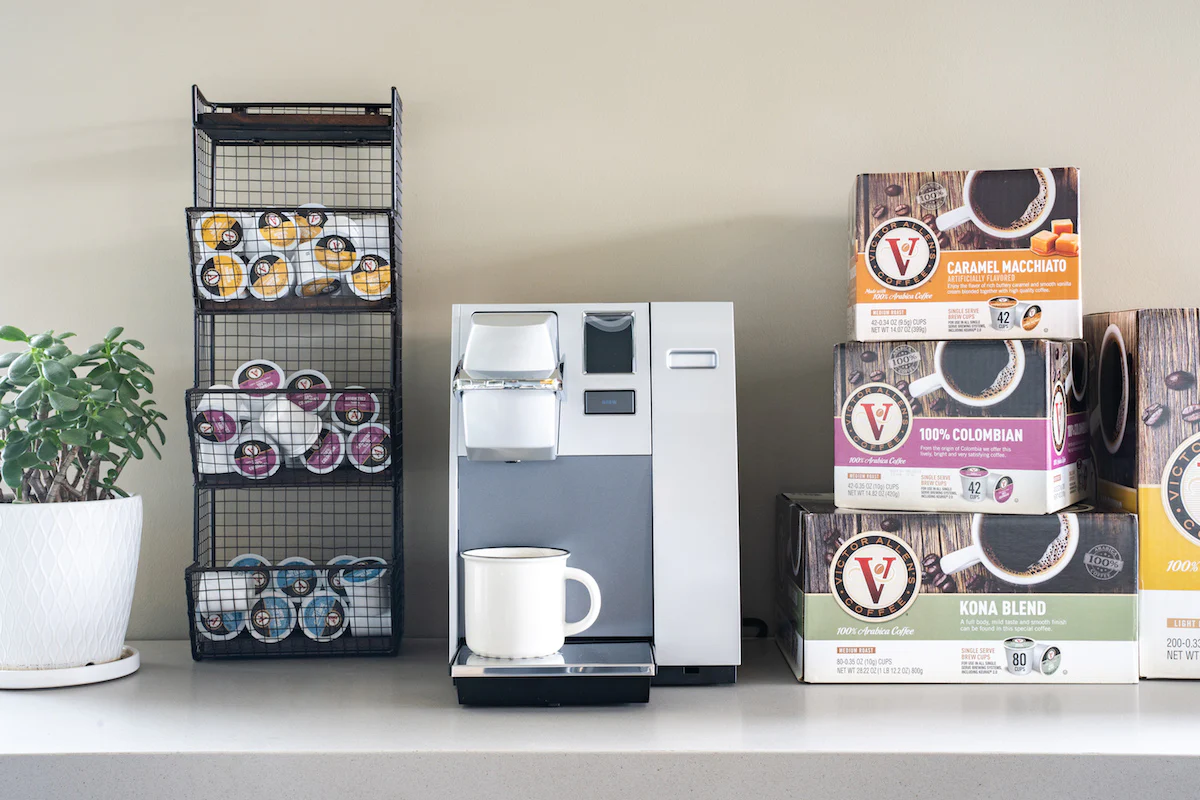How to Store Coffee

Storing coffee probably isn’t as straightforward as you might think.
Coffee bean storage is notoriously finicky. It may not spoil in the way a typical fruit or vegetable might, but coffee can go stale and flavorless, rendering a muddy cup of bitter “blecch” in your morning cup if you’re not careful. Here, we round up a few need-to-know tips for storing that fresh and ready-to-brew bag you just brought home from the store. (Or that just arrived on your doorstep.)
How to Store Coffee Beans
Storing coffee beans can be so particular for three main reasons: temperature, light, and exposure to air. Once the bag is opened, it immediately begins to oxidize and its quality will decrease — even faster if it’s a ground coffee.
To minimize exposure to these coffee-detrimental elements, the best way to store coffee is to aim for an opaque canister. You don’t want your containers or jars to be translucent. Exposure to light ages the coffee; so, pick a jar that is not clear and not glass, and then store it in a dark location like the inside of a kitchen cabinet. Do not refrigerate; keep the beans in a room temperature area.
Or, though it may have been appalling for the coffee purist to think of years ago, it’s increasingly fine to keep the coffee beans in their original packaging if it contains an air-tight seal. A jar or container will usually be preferable, but a zip-top bag will do the trick just fine.
Of course, if you’d like a heavy-duty way to seal your coffee, a vacuum-sealed container—many of which hold between 453 and 680 grams of coffee—can lock out air that would otherwise be trapped inside with your beans. A one-way valve keeps out oxygen and lets carbon dioxide remain.
And your coffee pod storage? Don’t fret too much: the inside of the pods is sealed with nitrogen, preserving coffee flavor for months. But if you can, do keep them in a dark space.
Is Freezing OK for Long-Term Coffee Storage?
The short answer to this is “Yes,” but it comes with a few caveats.
To know up front: Coffee is porous, and that’s bad news for your taste buds if the coffee’s exiting a freezer and entering a brewer. The coffee can absorb flavors — no matter how subtle — from other foods stored in your freezer. It’s also susceptible to freezer burn.
Still, you can use the coffee stored in the freezer. It may even be ideal for how to store ground coffee and get the most out of it. Try packaging the coffee in the portions you would want to thaw them for a week’s worth of consumption, that way you’re not risking the quality of the excess beans if you’re defrosting the whole batch at once and returning others to the freezer. And be sure to freeze using an air-tight container.
Pro tip: Frozen coffee or old, slightly stale coffee is a solid option for making cold brew.
Other Best Coffee Storage Considerations
A general rule of thumb for coffee storage is to never store more coffee than you can use in a month’s time—or sooner. Moreover, take extra care with storing coffee grounds; coffee rapidly oxidizes the moment it’s ground, so it’s always better, for the sake of freshness, to grind right before brewing.
Lastly, look at roast dates. Your storage efforts will be for naught if you find you’ve purchased a bag of beans that was roasted three weeks ago anyway.
The key to enjoying fresh, delicious cup after cup lies within proper storage of your coffee. Show your coffee some love and take some of our advice for storing your whole bean or ground coffee. Your taste buds will thank you for it!